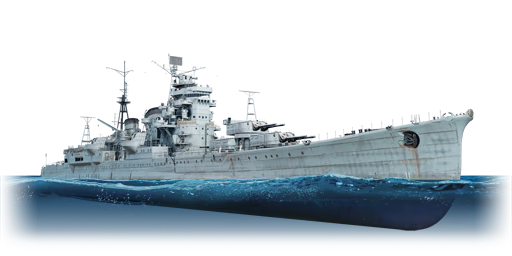Haguro (羽黒, namesake: Mount Haguro) was a Japanese heavy cruiser, the third of the Myoko class, laid down at the Mitsubishi shipyard in March 1925, launched in March 1928, and entering service in April 1929. She underwent modernisation in the early 1930s and again in 1939, participated in various operations including troop transfers and patrols in China from 1936 to 1937. During World War II, Haguro actively fought in the Pacific theatre, notably in the Battle of the Java Sea in February 1942 where she played a key role in sinking eight Allied warships, including the British cruiser HMS Exeter. She also took part in the Battle of the Coral Sea, the Battle of Midway, and the Battle off Samar during the Battle of Leyte Gulf. In May 1945, while attempting to deliver supplies to the Andaman Islands, Haguro was intercepted by British destroyers in the Strait of Malacca and, after being hit by torpedoes, sank. Her wreck was discovered in 2002 by divers from the MV Empress, sitting 67 metres below the surface.
Haguro was introduced in Update "Seek & Destroy" in her 1944 configuration. In a number of ways, she is typical for early Japanese heavy cruisers; however, thanks to modernisation, she receives many of the advantages of later ships, most notably an excellent anti-air battery, improved secondary guns and much better survivability than previous vessels, although she still lags behind some foreign contemporaries.















